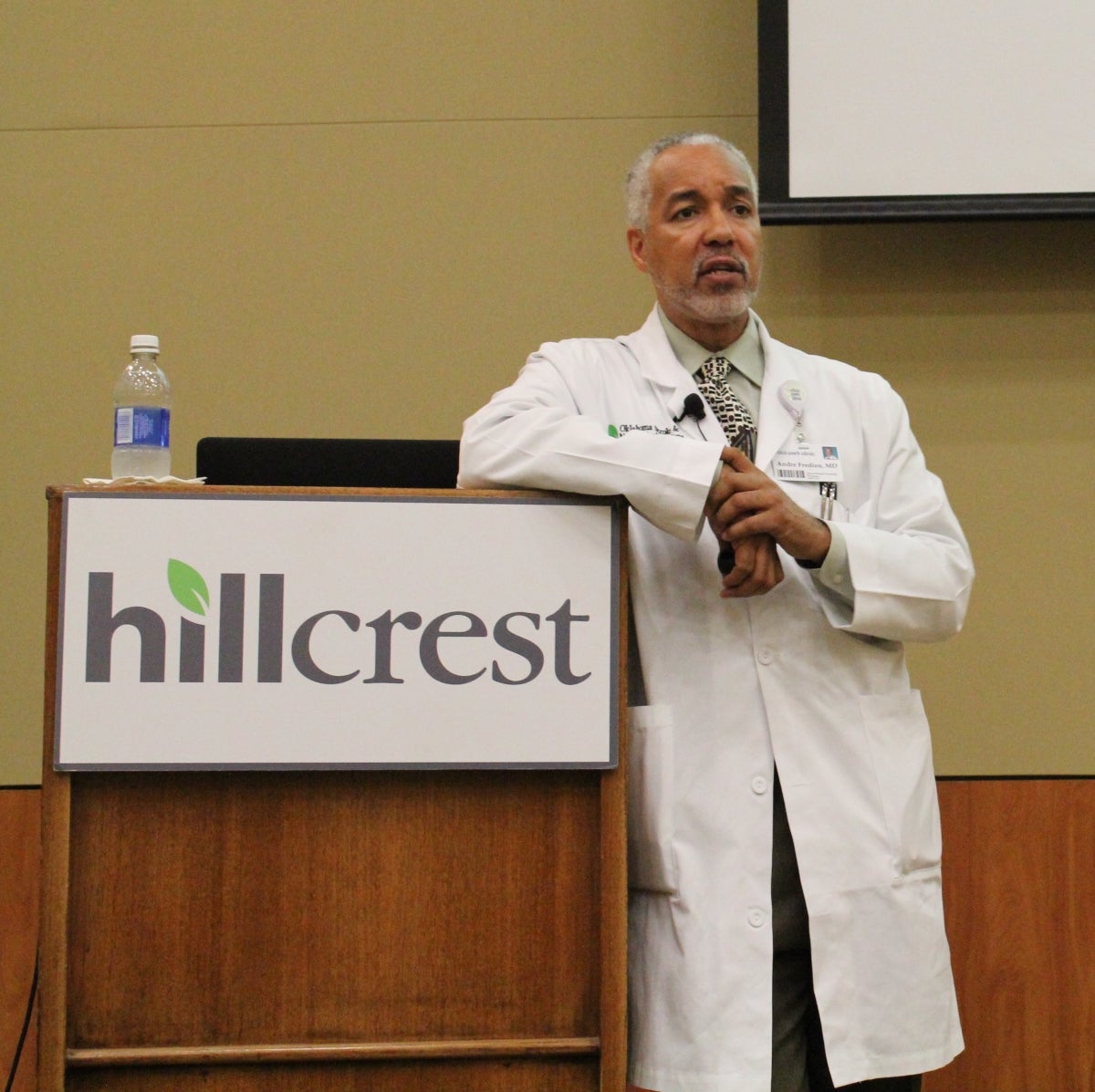
In health care we are either treating disease or trying to prevent it. Are we doing enough of the latter when it comes to stroke? “No,” declares Medical Director of the Oklahoma Stroke & Neurological Institute at Hillcrest Medical Center and interventional neurologist Dr. Andre Fredieu. “Nearly 80 percent of strokes can be prevented by educating the public about the signs and risks of stroke, emphasizing the importance of regular visits with their doctor, being compliant with their medication and eating a well-balanced diet. As we get older, we become more complacent about this and that’s when problems can occur.” A recent study by the University of California, Irvine supports Dr. Fredieu’s position. The study found 76 percent of acute stroke patients had a degree of preventability and 26 percent had a high degree of preventability.
 Dr. Fredieu believes the answer is two-fold – a better doctor-patient relationship and more public education. “There needs to be a global plan to educate people that the best way to treat a stroke is to prevent a stroke,” he says. “Plus, we as doctors have to do a better job at talking with our patients on their level. We are missing opportunities when they are in our clinics and we’re using a 5-dollar word instead of a 1-dollar word that does a better job of communicating the message.”
Dr. Fredieu believes the answer is two-fold – a better doctor-patient relationship and more public education. “There needs to be a global plan to educate people that the best way to treat a stroke is to prevent a stroke,” he says. “Plus, we as doctors have to do a better job at talking with our patients on their level. We are missing opportunities when they are in our clinics and we’re using a 5-dollar word instead of a 1-dollar word that does a better job of communicating the message.”
Those doctor-patient conversations, Dr. Fredieu adds, should include discussions in addition to medication to take a holistic approach to preventing a stroke. “We need to be open to all remedies when it comes to preventing a pathology like stroke. Again, we need to meet patients where they are and make sure we are on the same page. We should be talking about how high blood pressure can cause a stroke, why they need to manage high cholesterol and how their family history (of aneurysms) could increase their risk.”
In terms of public education, Dr. Fredieu says children in the community can be the biggest health care advocates. By educating children of all ages about stroke prevention through awareness campaigns, he says, the ripple effect influences that older, vulnerable population. “They can be your greatest advocates and get their mom, dad or grandparents to quit smoking,” he adds.
Building on stroke prevention education with the younger generation, Dr. Fredieu says community education to older adults, like seminars presented by Silver Elite or presentations at senior groups, reinforce the message. “We need to develop multi-generations of health advocates,” he says. “At seminars, people are always surprised to learn nearly 80 percent of strokes are preventable and there are things they can do to reduce their risk. People feel empowered when they leave those seminars.”
It is a mission Dr. Fredieu feels not only passionate about, but one he believes health care providers should embrace to serve the community. “We need to spend more time in the community educating,” he says. “As health care providers, it is so easy to wait for patients to come to us, but the chances are better when we can prevent a stroke. My main goal is to get out and be aggressive. If there’s a way for us to prevent a stroke, let’s do that!”
